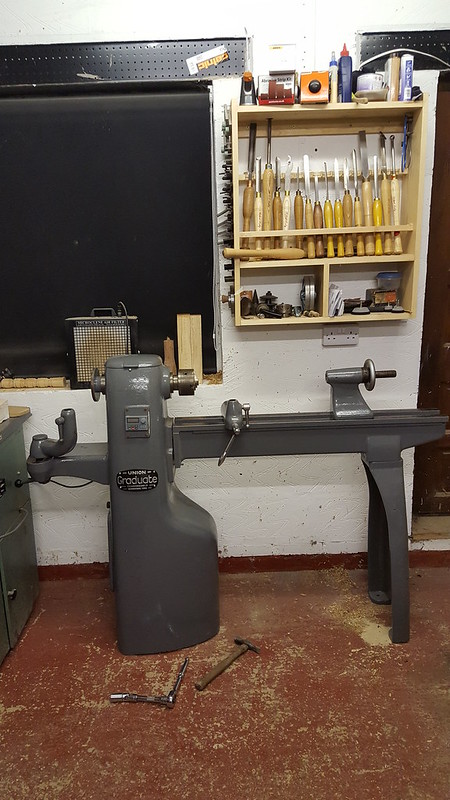Farmer Giles
The biggest tool in the box
Thanks Minilathe
Unfortunately I had problems getting a modern motor with any grunt to fit in the small cabinet, hence the older motor as the form factor is smaller. A modern 1hp motor will not fit. Given its the older motor shape, it isn't actually that old, but I think it may have had a hard life as it came out of a Boxford lathe usually used for training. The viceroy comes in two cabinet sizes, I didn't think it would make much difference when I bought the lathe.
It really wasn't doing much work and bang on 50hz so normal speed when it went so unless I've got a duff VFD then I'm pretty sure the motor needs a rewind. It's a cold plate VFD and there was no heat in the heatsinks. I believe it is about 50 quid for a rewind, and given the issues I had finding a motor to fit I think I will get it done. I could always extend the cabinet but that would be a lot of messing about and ruin the aesthetics
Cheers
Andy
Unfortunately I had problems getting a modern motor with any grunt to fit in the small cabinet, hence the older motor as the form factor is smaller. A modern 1hp motor will not fit. Given its the older motor shape, it isn't actually that old, but I think it may have had a hard life as it came out of a Boxford lathe usually used for training. The viceroy comes in two cabinet sizes, I didn't think it would make much difference when I bought the lathe.
It really wasn't doing much work and bang on 50hz so normal speed when it went so unless I've got a duff VFD then I'm pretty sure the motor needs a rewind. It's a cold plate VFD and there was no heat in the heatsinks. I believe it is about 50 quid for a rewind, and given the issues I had finding a motor to fit I think I will get it done. I could always extend the cabinet but that would be a lot of messing about and ruin the aesthetics
Cheers
Andy



























































































































